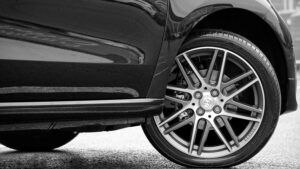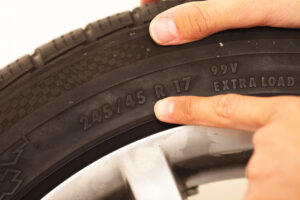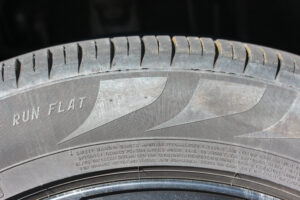What is the difference between Run-Flat tyres and ContiSeal Run-Flat technology?
Run-flat Tyres and run-flat Technology may seem like the same thing. However, there is one important difference between the two. Both run-flat tyres and run-flat technology have the same advantages, however, it is important to choose the right one for your vehicle.
What is Run-Flat Technology and what are the advantages?
If you are driving a vehicle that isn’t suitable for run-flat tyres, but you still want the advantages of a run-flat tyre, there is an alternative solution: ContiSeal Technology. A tyre blowout is the last thing you want to be dealing with, especially driving at high speeds such as 70mph. Continuing to drive after a puncture would be impossible on a normal tyre. However, ContiSeal Technology tyres contain a layer of sealant inside the tyre that immediately can seal up any puncture up to 5mm in diameter. Continental says that you can drive up to 120 miles after getting a puncture, however, your tyres should be checked by a specialist as soon as possible. From November 2014, all cars sold must have TPMS, in case of a sudden loss of air pressure after a puncture. The ContiSeal symbol can be found on the sidewall of the tyres if you are unsure if yours have run-flat Technology. Therefore providing a smoother drive as a normal tyre but with the benefit of ContiSeal Technology.
What are Run-Flat tyres and why are they different?
In comparison to the run-flat technology tyres, conventional run-flat Tyres are known to have a more solid structure (sometimes known as self-supporting) due to the design. The automatic alert from the TPMS allows you to know that you have a puncture. Without this, there would be no way of knowing. Run-flat tyres have reinforced sidewalls, this means you can continue to drive on them but only at a limited speed of 50mph for a maximum of 50 miles. This is important to stick to, otherwise, you risk damaging the wheel itself. This will be a much larger cost than just replacing a damaged tyre. You can safely drive to a garage to have your tyre changed. Although there are limitations, there are many advantages to driving on run-flat tyres. For example, strengthened sidewalls help keep your car in complete control, especially after a puncture has occurred. Another advantage of having run-flat tyres fitted means that you no longer need to carry a spare wheel. Although this is the same case with the ContiSeal technology, this means less overall weight which improves your fuel efficiency and mileage. Over the last few years, many manufacturers have repair kits instead of a spare tyre thus taking up less space in the back of your car.
You should never fit run-flat tyres to cars that are not run-flat appropriate. They often come as ‘Original Equipment’ as they are the tyres that are originally fitted when the car leaves the factory. This is why if you purchase a car and you discover there is no spare tyre or repair kit, you must check to see if your tyres are indeed run-flats and replace like for like.




